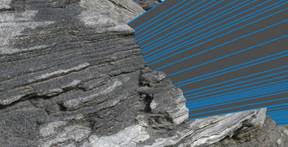Channels and lobes,
lobes and channels—the processes, dynamics, and geological record of deep-water
fan systems are shaped by their interactions. In this paper, Hamilton et al. explore
the relationship between the hydraulics of the channel feeding deep-water lobes
in steep fan systems and the geometric properties of thickness, width, and
length of the resultant terminal submarine fan lobes. Building on a series of
laboratory tank experiments and high-resolution seismic data from the
Quaternary east Corsica Trough, Golo Basin, the data show that distributary
channel hydraulics can aid in describing the processes that set the maximum
thickness of lobe elements. They further suggest that the maximum lobe element
thickness can be estimated using a hydraulic jump equation if flow in the
distributary channel is supercritical. The results illustrate how analytical
morphodynamics, when tied to processes, can provide unique perspectives on the
nature and scales of heterogeneity on analogous systems
Linking hydraulic properties in supercritical submarine distributary channels to depositional-lobe geometry by Paul Hamilton, Gwladys Gaillot, Kyle Strom, Juan
Fedele, and David Hoyal



















